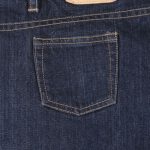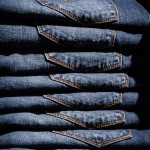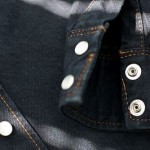
by MakeYourOwnJeans | Denim Shorts |
Are your favorite pair of denim shirts fraying at the bottom? Unfortunately, this is a common problem encountered by countless men and women. As with other garments, it’s not uncommon for the bottom of denim shorts to unravel over time. It doesn’t happen immediately. But it you wear your denim shorts long enough, they may eventually begin to unravel — also known as fraying — at the bottom of each pant leg. The good news is that you can often prevent denim shorts from fraying by taking a few simple precautions. Choose Denim Shorts With a Clean Hem If you’re shopping for a new pair of denim shorts, make sure they have a clean hem. In other words, don’t choose denim shorts with a cutoff bottom. If they are cutoff, the denim fabric will fray more easily. You can tell whether a pair of denim shorts have a cutoff bottom by inspecting the denim fabric around the bottom of the pant legs. If you see frayed pieces of denim dangling from the bottom, they are cutoff. If the bottom of the pant legs feature a clean hem, on the other hand, they are not cutoff. Choosing the latter style will naturally protect your denim shorts from fraying. Of course, this is just one of several ways to minimize the risk of fraying and extend the lifespan of your denim shorts. Consider Stretch Denim Shorts In addition to a clean hem, another way to prevent your denim shorts from fraying is to choose a pair made of stretch denim. The Stretch Denim Shorts sold here at MakeYourOwnJeans, for example, are...
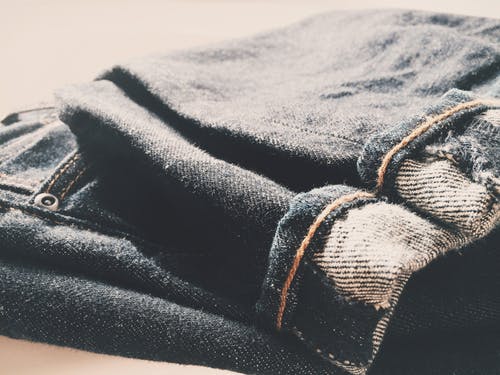
by MakeYourOwnJeans | jeans |
When shopping for a new pair of jeans, you may come across the term “whiskers.” Jeans with whiskers, known as whisker jeans, have become increasingly popular among men and women alike in recent years. To the unsuspecting eye, however, they look like any other pair of jeans. While whisker jeans are made of the same denim material as other jeans, they aren’t necessarily the same. If you’re trying to grasp the concept of whisker jeans, keep reading to learn more about this modern denim style and why it’s become so popular. The Basics of Whisker Jeans: What You Know Whisker jeans are denim jeans that feature thin vertical lines of fading on the front. These lines of fading are called “whiskers” because, as you may have guessed, they look like whiskers. The lines are vertical, but they often expand outwards towards the bottom of the jeans. As a result, they look like whiskers — and jeans featuring these lines are known as “whisker jeans.” You can easily distinguish between whisker jeans and traditional non-whisker jeans by looking for lines of fading. Whisker jeans generally have small but noticeable lines of fading on the front, with most of the whiskers occurring around the crotch area. In comparison, non-whisker jeans lack these lines of fading. Some non-whisker jeans may still have areas of fading, but they don’t have these same whisker-like lines of fading. The Benefits of Whisker Jeans Why should you choose whisker jeans exactly? Well, you can find premium, high-quality jeans either with or without whiskers. With that said, the presence of whiskers offers a few noteworthy benefits. First,...
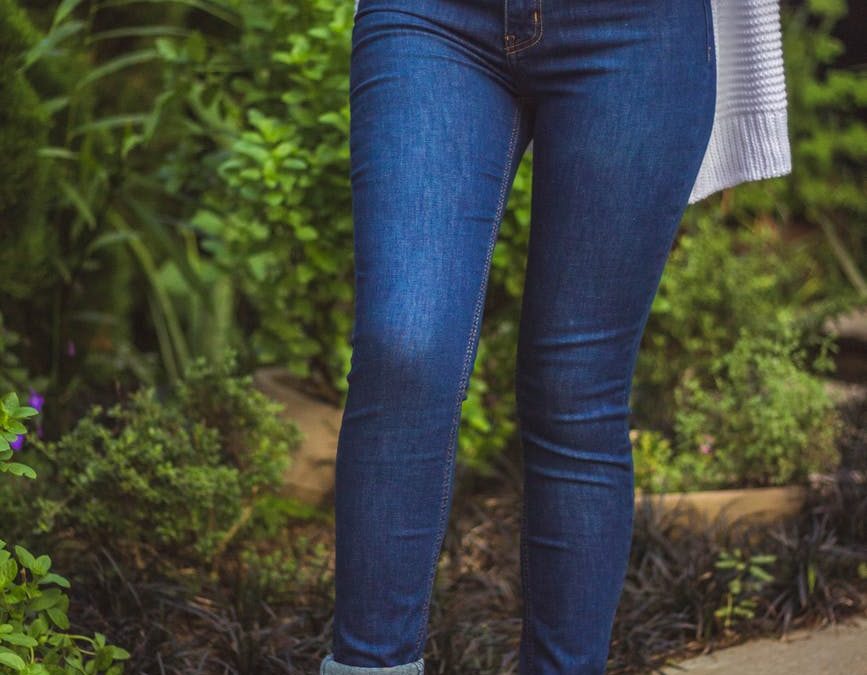
by MakeYourOwnJeans | jeans |
Nothing beats the superior level of comfort offered by a pair of high-quality stretch jeans. With their increased elasticity, they’ll allow you to freely move and bend your body. Whether you’re getting dressed for a night on the town or simply running your daily errands, you can’t go wrong with a pair of stretch jeans. Not all stretch jeans are made equal, however. To take advantage of their unique benefits, you need to choose the right type. Below are seven important things to consider when shopping for stretch jeans. #1) Type of Elastic Fabric Before purchasing a pair of stretch jeans, look to see what type of elastic fabric they are made of. All stretch jeans are made of both denim — a form of warp-faced cotton — as well an elastic fabric. With that said, there are several different types of elastic fabrics used in stretch jeans, some of which include spandex, polyester and Lycra, the latter of which is actually a form of spandex. To find out what elastic fabric was used in the construction of stretch jeans, check the care label. Here, you should find both instructions on how to clean and care for the stretch jeans, as well as the fabrics from which it’s made. Keep in mind that all stretch jeans are made mostly of denim, but they still contain at least a small amount of elastic fabric, which is responsible for their increased elasticity. #2) Composition of Elastic Fabric You should also check the composition of elastic fabric used in the stretch jeans’ construction. Some stretch jeans feature just 1% of elastic fabric,...

by MakeYourOwnJeans | jeans |
Do your jeans bunch at the knees when worn? Well, you aren’t alone. This is a common problem reported by men and women who wear jeans on a regular basis. Bunching occurs when excess fabric forms in a particular area, such as the knees. While it typically won’t affect the comfort or structural integrity of your jeans, it will affect their appearance. If you have a pair of jeans that consistently bunch at the knees, they’ll look awkward — and probably unattractive — when worn. You can prevent your jeans from bunching at the knees, however, by following a few simple steps. Choose a Baggier, More Relaxed Cut The cut in which your jeans are made will affect their susceptibility to bunching at the knees. Generally speaking, skinnier cuts are more likely to bunch at the knees than baggy cuts. A pair of skinny leg jeans, for example, will probably bunch at the knees if you wear them long enough. This is because skinny leg and similar denim cuts are tight, and when you wear them, you’ll stretch the denim fabric in certain areas like the knees. If you’re worried about your jeans bunching at the knees, choose a baggier and more relaxed cut instead. Go With Stretch Denim Another way to prevent the dreaded knee-bunching effect is to choose jeans made of stretch denim. What is stretch denim? Basically, stretch denim consists of both regular denim as well as an elastic fabric like polyester or spandex. Stretch denim jeans still consist mostly of regular denim — usually at least 90% — but they also contain an elastic fabric...
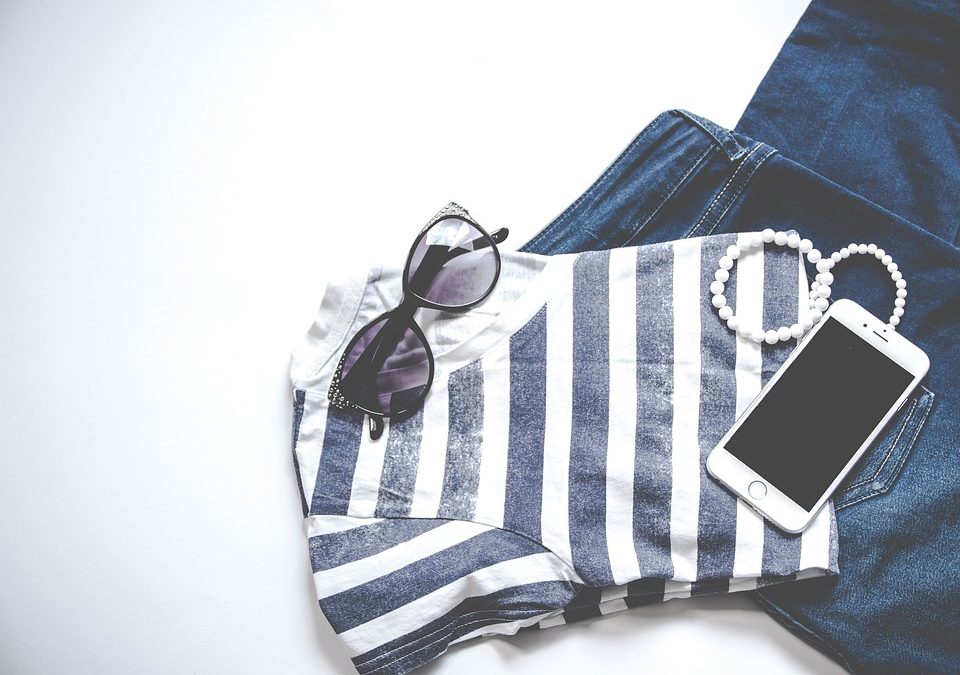
by MakeYourOwnJeans | jeans |
Have your favorite pair of denim jeans faded to a lighter tone? Most men and women prefer deep, dark-colored jeans. A pair of indigo jeans, for example, will offer a dark blue appearance that complements most other garments and fashion accessories. Over time, however, jeans may fade from their original color to a lighter color. Jeans typically fade for one of two reasons: sun bleaching or dye being released. Of course, sun bleaching occurs when jeans are exposed to sunlight for long periods of time, resulting in the gradual bleaching of its dye. But jeans can also fade to a lighter tone if their dye is released when being washed or dried. The good news is that you can protect your jeans from such fading using saltwater. It’s a simple yet highly effective way to set the dye in your jeans and, therefore, protect them from fading. How Saltwater Works You might be wondering how exactly saltwater can set the dye in your jeans and protect them from fading. Well, saltwater works by absorbing excess or loose dye, preventing that dye from being released by the jeans. If you simply wash your jeans in “regular” water, some of the loose dye may be released. It’s not a substantial amount of lost dye, but it’s still noticeable if you wash your jeans on a regular basis. Using saltwater, however, can minimize the effects of fading by setting the dye. The saltwater will absorb any loose dye while also setting the remaining dye. There are other ways to protect your jeans from fading, but using saltwater is arguably one of the...







